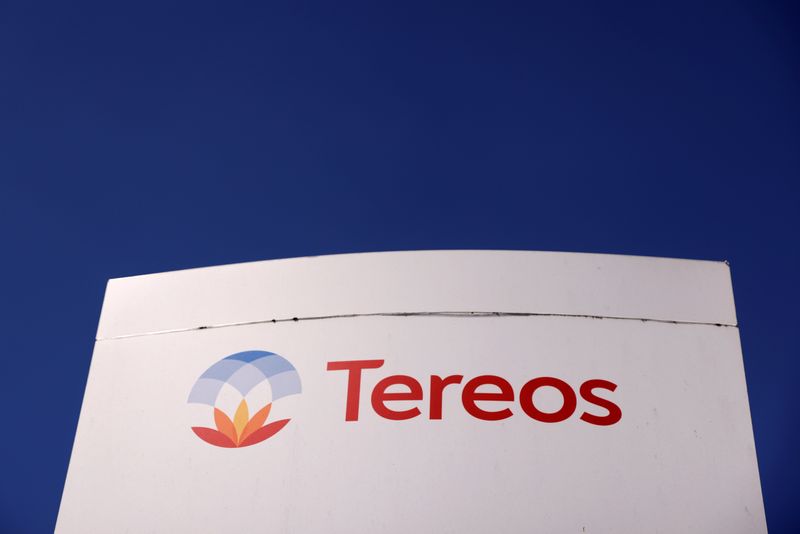By Sybille de La Hamaide
PARIS (Reuters) - Starch makers in Europe have slowed production as a drop in demand - particularly from paper and cardboard manufacturers - and cheap imports from Asia leave them with excess capacity, and see little prospect of improvement before late this year.
Three industry sources told Reuters the European Union's starch industry is running at about 70-75% of potential capacity, as demand declines from its pandemic-era peak. The sources asked not to be named as the issue is sensitive.
Starch and its derivatives, made from wheat, maize, potatoes and tapioca, are used in products from ice cream to cosmetics, paints, pills and cardboard due to their sweetening, thickening and texturizing properties.
Major starch producers in Europe include U.S. groups Archer-Daniels-Midland and Cargill, French cooperative Tereos and family group Roquette.
Data from industry group Starch Europe shows EU output rose 25% between 2008 and 2020 as e-commerce grew and consumers bought more processed food and drinks, before falling back 4.5% over 2021 and 2022 as people returned to shops and restaurants.
Since the pandemic, Europe's starch makers have been hit harder than U.S. rivals by higher energy costs and a slower economy. Asian demand has meanwhile been supported by population growth and the continent's large textile industry.
In February Tereos reported a 37% fall in core profit at its starch and sweeteners unit in late 2023 and warned of "a change in trend from the strong and atypical earnings growth recorded in recent quarters".
"The last couple of years have been tough and there is no indication that it's going to be easier this year," said Jamie Fortescue, managing director at Brussels-based Starch Europe.
PAPER AND CARDBOARD WEIGH
Data is not yet available but Fortescue estimated EU starch production could have fallen more than 10% last year. The industry uses roughly 9% of the EU's combined supplies of wheat and maize.
The paper and cardboard industry accounts for about a third of starch use. But output across the EU, Britain and Norway fell 13% in 2023 in 2023, industry group CEPI said, citing inventory destocking as well as economic conditions and spiking costs.
Declining starch production has curbed demand for grains, with the use of wheat and maize for starch in France, the EU's largest grain producer, expected to hit its lowest level this century in the 2023/2024 marketing season.
"At some point, when the market is no longer pulling, you have to cut production," Marie-Laure Empinet, head of French starch producer group Usipa, said. Empinet is also the external relations director at Roquette, but stressed she was not speaking for the company.
ADM and Tereos declined to comment. Cargill did not reply to a request to comment.
HIGH COSTS, HIGH IMPORTS
Imports of cheaper starch products from Asia are another factor: Chinese dextrose exports to the EU rose more than fourfold last year from 2022 and sorbitol exports more than five times, Starch Europe data shows. Both are used to sweeten food.
Vietnamese tapioca imports nearly trebled for the second year in a row, supported by the EU-Vietnam trade agreement that came into force in 2020.
Although volumes remain relatively small, such rapid growth is a concern for the European industry at a time when Brussels is negotiating a trade deal with the world's largest starch exporter, Thailand.
China and the United States are the biggest starch producers, mainly from corn. Thailand produces most cassava starch, called tapioca, and Europe uses mostly grains and potatoes.
"LIGHT AT THE END OF THE TUNNEL"
In France, farm office FranceAgriMer has cut its forecast for how much wheat and maize the starch sector will use in 2023/24 by half a million metric tons since July, to 3.86 million, down 9% from last season and the lowest this century.
That partly reflects a halt in production at a Tereos factory in northern France following a November fire. The firm has said it rerouted processing to French and Belgian factories that were running below capacity.
A sharp fall in grain prices due to ample global supply could help improve starch makers' margins - raw materials are their biggest cost - although companies typically cover their needs for several months ahead.
"There is light at the end of the tunnel, but probably not before the end of the year," said Gustav Deiters, chairman of the German Cereal Processing, Milling and Starch Industries' Association.
